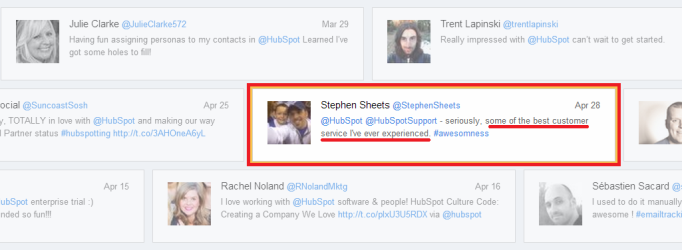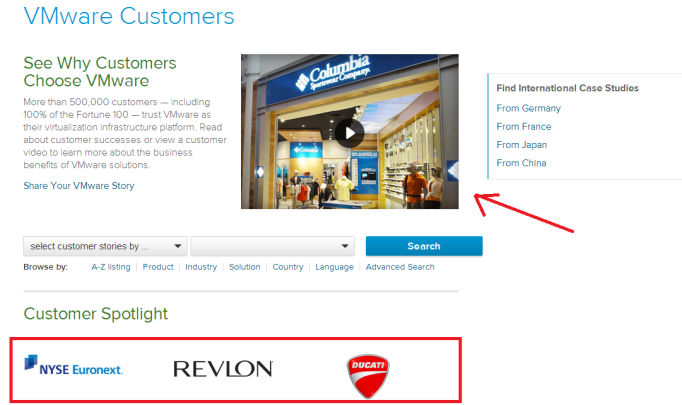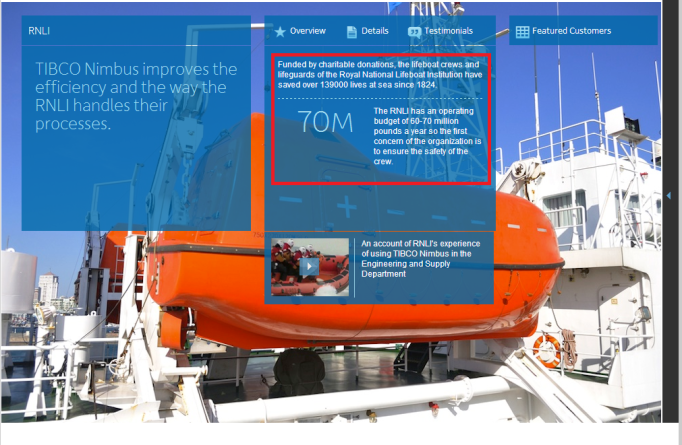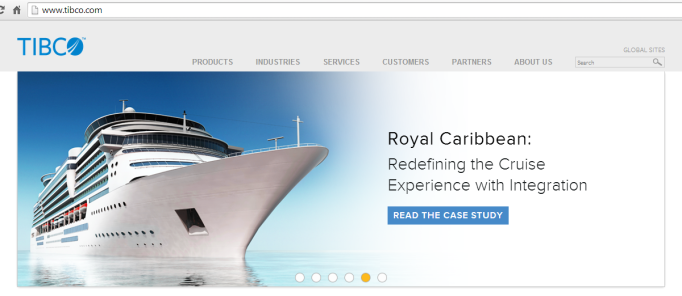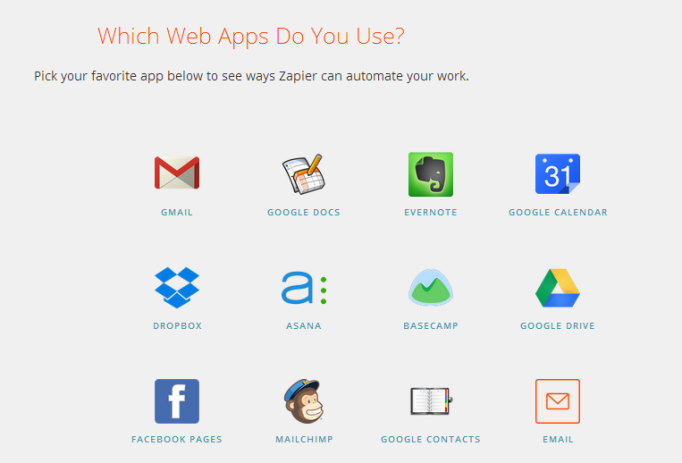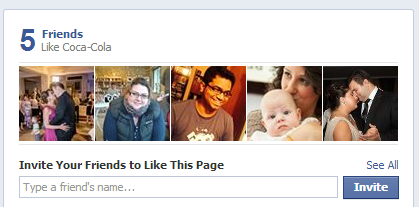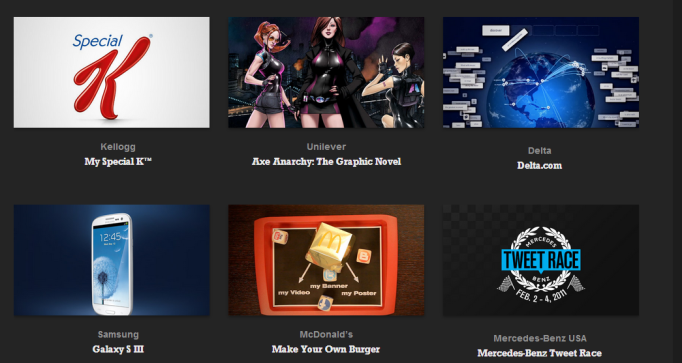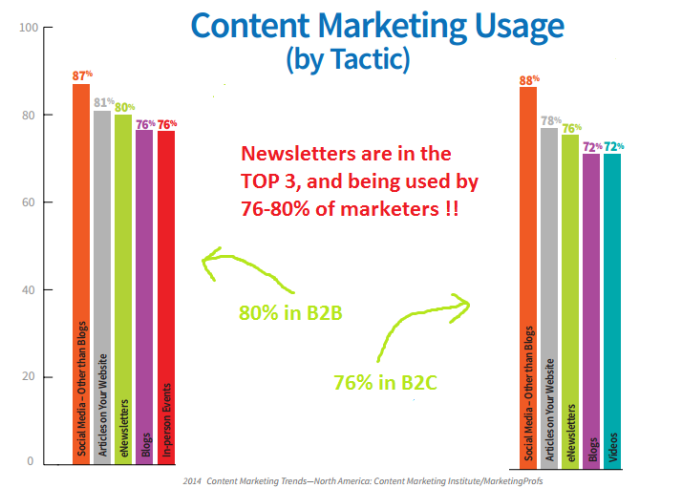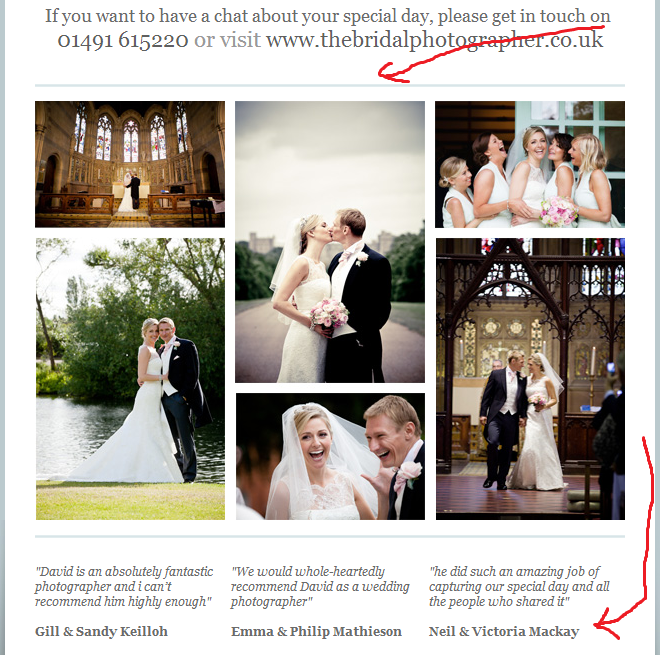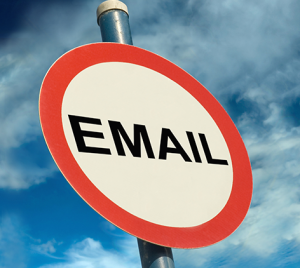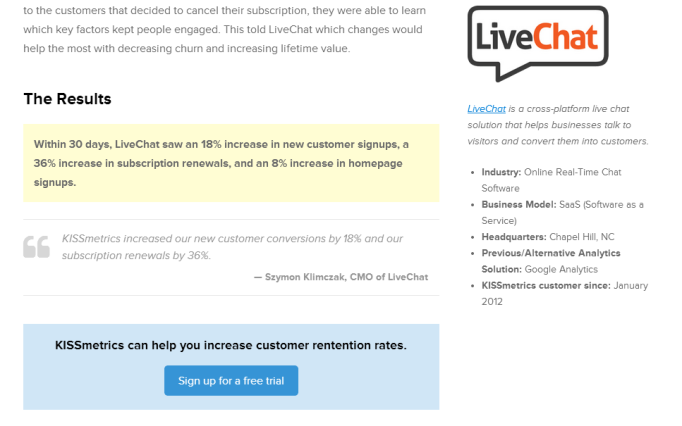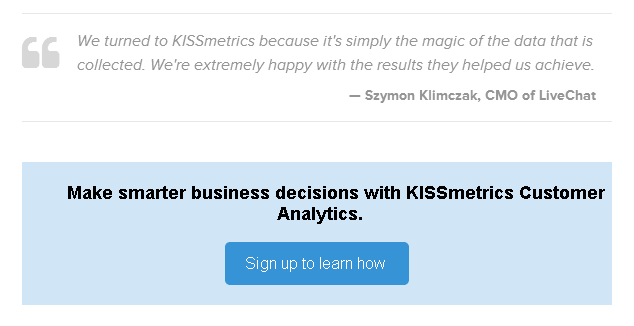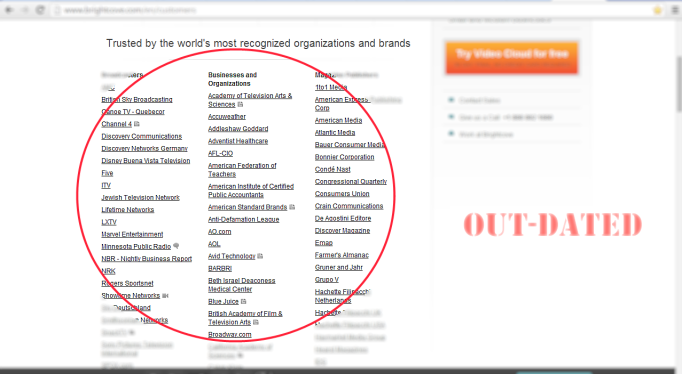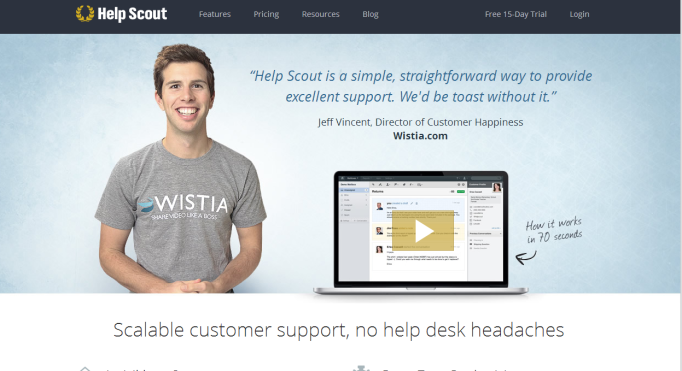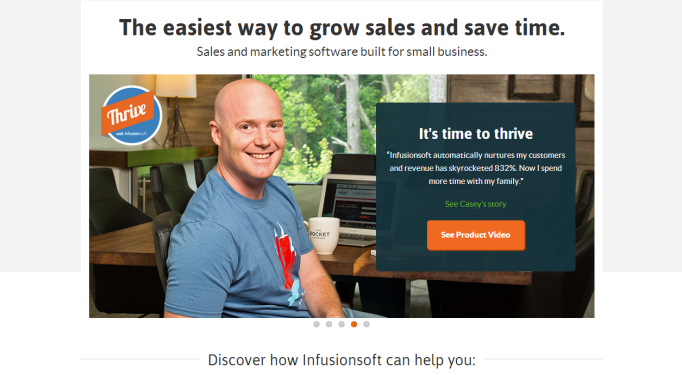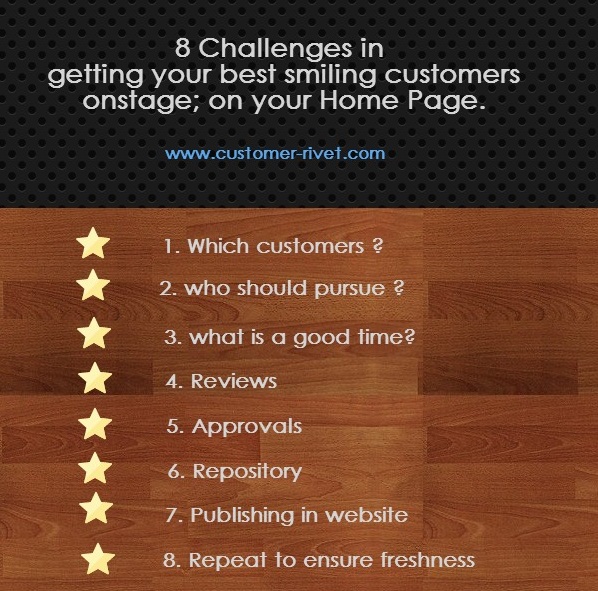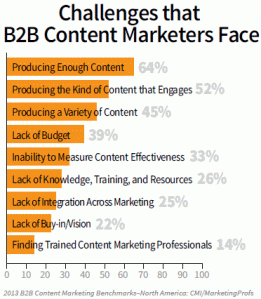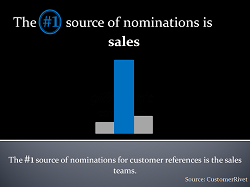How do you ensure that the social proof you are collecting will help you in your inbound marketing ? Company Generated Content or User Generated Content (UGC) – which proof works better – in terms of getting you better results – in the form of more traffic, more conversions, and more leads ! (see my recent article on 25 Ways to Boost your marketing with customer testimonials and social proof )
Keep in mind social proof can be any/all of these – customer names, logos, testimonials, photos, social share/follow counts, success stories, case studies, videos, user reviews, ROI studies, snapshots, spotlights, business benefits, metrics achieved, stats about customer base, product/service usage, tweets, social mentions, media mentions, celebrity endorsement, etc etc (see my recent post to see all the 21 types of social proofs that you can use in your marketing)
In general, we can classify Social Proof into 3 Categories based on how it is created.
A. User Generated Content (UGC)
This is created by the end users on their own, typically on 3rd party platforms. Less or no control by the company.
Examples could be the following
1. Social mentions and posts in platforms like Twitter, Facebook, Google+, LinkedIn, Pinterest, etc
2. User Reviews in platforms like TripAdvisor, Yelp, BazaarVoice, TrustRadius, G2 Crowd, TrustPilot, etc
3. User Videos in platforms like youtube, vimeo, vine, etc
(also see here for the various different kinds of UGC )
B. Company Generated Content (with endorsement from Users/Customers/3rd Party)
This is produced by the company, but with close collaboration with the end users and customers, or even 3rd parties of repute. More control by the company, but still endorsed by the users.
Examples could be the following –
1. Testimonials, Case Studies, Stories, Videos, etc
2. Social Sharing, Followers, Subscribers, etc
3. Celebrity and Influencer Endorsements, media mentions, etc
C. Company Generated Proof (unverified or not easy to verify)
These are “facts” claimed by the company, with less scope for verification. Fully controlled by the company.
Examples could be the following –
1. Customer Base Statistics eg. 10,000+ customers.
2. Product and Service usage statistics eg. 40 Million Emails sent out.
Now which of these categories makes sense ?
Though the question seems simple enough, the answer is not very straightforward. To answer this question lets look at it more pragmatically – not from the seller point of view, but from the buyer point of view. Putting myself in the shoes – If i am a buyer in the market, what are the questions i would ask when evaluating any vendor ?
6 Questions that i would ask any vendor
1. Social Proof – Do you have it ?
Could you demonstrate to me that there are other people who have used your product and services before ?
Lets look at the results of a survey that Dianna Huff and KoMarketing Associates did asking what B2B Buyers today want from vendor websites.
It is very clear that social proof is no longer a nice-to-have, but a must-have in order to establish credibility in the eyes of the buyer. This is very significant given the fact that 60-80% of the buying decision is taken even before a prospect tries to contact your sales teams.
2. Credibility – How much can i trust this ?
There is no question about faking social proof what-so-ever. That would be a stupid suicide. (see more in my recent post on Best Practices : How to keep testimonials real, and reasons why not to fake them)
The question is how convinced the buyer would be on seeing your proof points ? How credible does your proof look ?
We can classify the 3 categories based on the level of inherent credibility of the type of social proof. This has nothing to do with the proof point in itself, and it is a relative ranking.
I. User Generated Content – HIGH
User Generated Content does stand high in the credibility ladder. The reason being obvious – it is the end user making the point. He/She has no reason to say something good (or bad for that matter), unless there is a strong first hand reason. It also gives a fair representation of both good and bad sides. In real-life nothing is 100% good, so it always make it more credible to see the not-good side as well.
Example – Yelp Reviews – Lazy Bear

II. Company Generated Content (with endorsement from Users/Customers/3rd Party) – MEDIUM
Company Generated Content like testimonials, case studies, and videos will always be lower in credibility compared to the earlier User Generated Content types. But you can always make it get closer (if not equal) by taking measures to keep it as real as possible. for the same reasons – it is a good idea to cover areas that might not be your week points, by answering questions that might be a concern by your typical customer. Of-course it has to be delivered and acknowledged by the end user in your content.
Example – Campaign Monitor’s Testimonials

III. Company Generated Content (unverified) – LOW
Pure company claimed “facts” that have no easy way to verify would naturally be received with an element of skepticism. Therefore it always helps to link it to publicly available facts where possible.
Example – MailChimp’s 5 Million Users

3. Consistency – is everyone saying the same thing ?
Am i hearing these from just 1 channel from 1 particular audience ? or is it across the board irrespective of channels, across the audiences ?
As a buyer. As a prospect – If there is just 1 kind of social proof, then i am skeptical about it. Whereas if there are different kinds of social proof, it gives me an opportunity to see if the experience is consistent across the board.
Are your case studies, videos, reviews and tweets saying the same things ?
Lets look at an example – Social Proofs by Hubspot
A. Hubspot Case Studies
In this example Geoff Tucker from Alere Wellbeing says how good his experience has been with Hubspot’s customer service.

B. Hubspot Twitter Posts
This Tweet by Stephen says how good his experience with Hubspot has been w.r.t customer service.
C. Hubspot TrustRadius Reviews
This review in TrustRadius by Kevin says the same thing about Hubspot’s customer service.
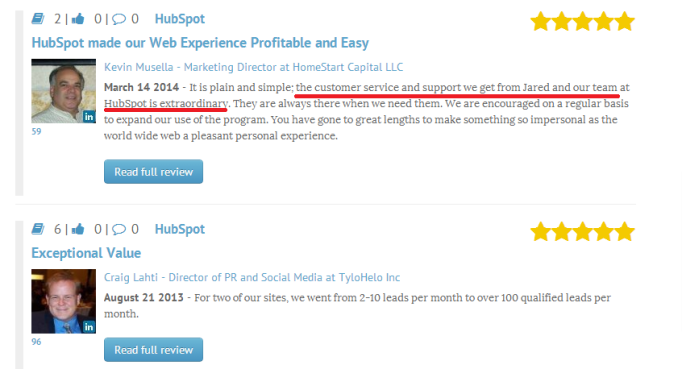
All 3 different types of social proof are saying the same thing about Hubspot’s customer service, which is awesome. Therefore more varieties of proof points are very welcome from a buyer perspective because it provides the buyer an opportunity to verify if the claims are consistent across the board. Which leads to a stronger assurance to believe the vendor.
4. Natural – does it look too scripted ?
Scripted content is less convincing compared to natural sounding ones. This is where user generated content scores over company generated ones. If they sound non-scripted and spontaneous, it makes them more believable.
Example – Manpacks Testimonials
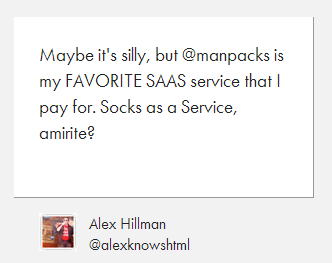
Therefore it also makes sense to keep the company generated content less scripted. The imperfections actually make them sound more genuine. Don’t edit anything just for the sake of it, unless it makes a significant difference to the messaging.
5. Clear Benefits – are the features-benefits convincing ?
Is it clear that using the features provided would lead to the benefits claimed ? Features in itself does not mean anything, unless the customer can see the benefits associated.
Example – Optimizely’s Case Studies
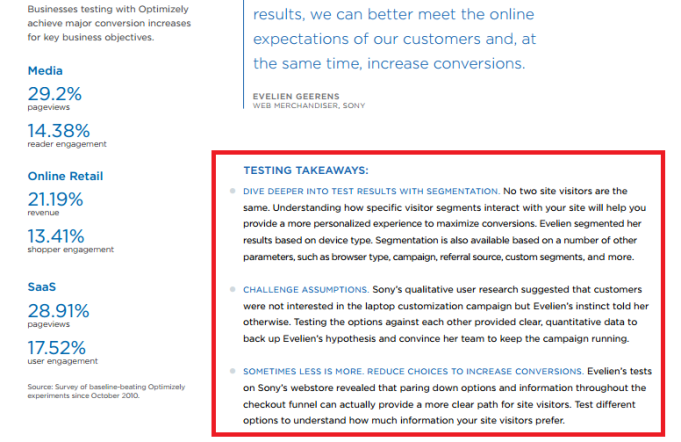
This is especially important if your product or service has a lot of features. As a buyer, i would like to hear from users how using a particular feature has led to a claimed benefit.
This is where the company produced assets like case studies, stories, ROI studies, videos, etc are better placed compared to user generated ones where there is less control on the structure and flow of the content. (see more in my recent article Case Study Tips: 5 Examples of how not-to-waste your customer success stories (w/ best practices)
As a buyer i am more compelled to believe your social proof when you have the depth and clarity.
6. Buyer Persona – does it look like “me” ?
The crux of the social proof argument is that it is “what people LIKE ME are doing”. Therefore for it to be effective as a marketing tool, it will have to match the desired profile of the buyer – what we call as the buyer persona. It sounds easier said than done because your current customer base need not be the same as your ideal or desired customer base. This is because your target customer profile is always a moving target.

User generated content has less control on the profile of the people who create and contribute to the content. Whereas company generated ones have more control on the people you want to collaborate with. Also it is easier to fill the gaps.
Conclusion – the good news is that you need everything !
As you can see there is no 1 kind of social proof that can satisfy all the needs of the buyers. Therefore it is good to have as many types as possible because showcasing them together helps cover all the needs of the buyer. It is way more smarter than betting on 1 type of social proof. Therefore, Company Generated Content is as important as the User Generated ones, or vice-versa.
If you feel this is valuable, please LIKE and SHARE it with your friends. Appreciate it.
thanks & regards, anupam
Anupam Bonanthaya is an experienced Customer Success Marketer and the Founder of CustomerRivet – The Social Proof Marketing Experts
Rivet.ly – Hosted Our-Customers Page
Get More Leads and More Conversions by Optimizing the use of Testimonials, Success Stories, Case Studies, Videos, Reviews, Customer Photos, Tweets, or any other Social Proof, in your Marketing.
Ask for a Demo today to see how it can help “Transform Your Customer Success Marketing”. OR Contact Anupam Bonanthaya via LinkedIn

